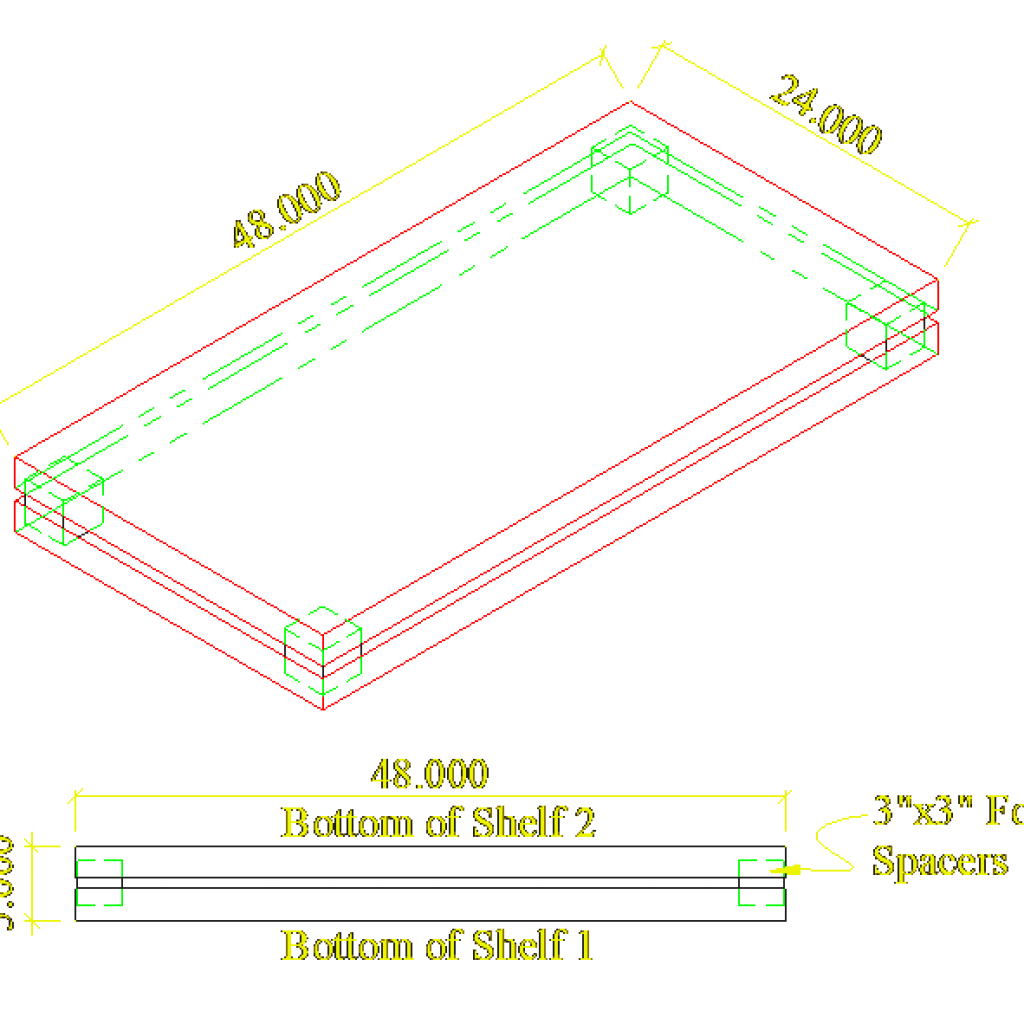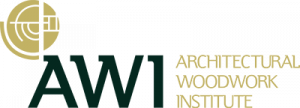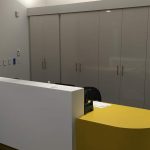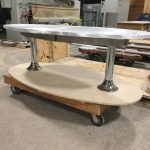Custom Shelving for a University Addition
The Project: Shelving for a University Addition: A Lesson in Quality Control
There were a few must-haves for this project:
- Shelves needed to be constructed so that scientific devices would not roll or slide off.
- Shelves needed a chemical-resistant surface.
- All shelving needed to be in a specific matching color.
The university envisioned a plastic laminate shelf with seamless 3mm PVC edging that extended 1” above the board thickness. This material proved challenging because, while the laminate was resistant to chemicals, it was scratch prone. It was up to the designers at DH Schmidt to engineer and manufacture the final product.
The Challenges
This project forced us to really consider quality control as we worked around some of the challenges presented by this unique shelving material and design.
- The very first issue we needed to solve was how to adequately secure the small 3mm x 25mm edge of the PVC to its right angle counterpart at each corner of the shelf to provide a seamless edge.
- The next challenge occurred when the edging came in. Once it was cut to size, we discovered that it was warped. We ordered replacements; however, the majority of that was warped as well, and to keep the project on time and under budget, we had to make do.
- The final challenge concerned quality control. The chemically resistant laminate was easily scratched and the 3mm lip on each of the shelves could be broken in manufacturing and transit if not carefully considered.
The Solution
With trial and error, and a little extra time, everything turned out just right.
Solution 1: In order to ensure that the 3mm PVC lip on every shelf was seamless and strongly connected, we had to test several different adhesive techniques and products. This took some time. One method proved to be extremely strong, but it discolored the seam. Another worked perfectly, but it took too long to achieve and harden. To sniff out the most effective solution, we set up a data table and tested each product and method. Then, using a rating system, we arrived at the most ideal production technique. Thanks to one of our very capable younger colleagues, we used Snapchat to record quick 10-second videos with labeled captions of each adhesive, method used, and force required to break the bonds. We also created braces to sit inside the shelf during the final adhesion of the edging so that they didn’t warp while curing.
Solution 2: The edging length needed was only 4’ long at most. However, we quickly discovered that a sizable amount of the edging material was defective, with a curved offset of up to 3/8” at the middle. If the edging was only needed to cover the edge of the board, it would have been just a minor problem, since we could trim off the excess. In this case, we needed to keep the full width of the edging, so a curve of that size simply wouldn’t work. After going back to the supplier, getting more edging to replace what we had, and discovering that it still curved in a way that caused an issue, we had to find another solution in order to make the schedule for delivery. We ended up pre-cutting all the pieces required, saving the flattest pieces for the longest edges, and setting them in a clamping device to force them into a straighter alignment. Mild heat was applied to persuade the material to relax its curve. In the end, the most effective thing we could do was clamp all the pieces until they were applied to the shelves and hand pick the straightest ones for use. Considering that we had an abundance of edging at this point to choose from, all worked out well for the final product.
Solution 3: The chemically resistant laminate, in tandem with the specific color chosen, resulted in a surface that would reveal any and every scratch. We had to be extra cautious not to damage or rub the laminate, which required some modified manufacturing practices. In addition, the 1” free standing lip all the way around the shelves created another weak point. It was only 3mm thick, so if enough pressure was applied to it in any way, it could damage the edging. We had to ensure a secure method was used for transporting, handling, and installing the shelving units. To do this we utilized foam blocks to support the lips of the edging. Stacking proved too compressive, so we had to limit the height of the bundles and ship them on edge. Each shelf received a final Quality Check as it was packaged and placed on the truck for delivery.
The Final Product
In the end the shelves turned out great, and working on them proved to be a fun challenge for us to solve. Now, the edging provides enough strength to prevent any devices from accidentally being pushed off or shaken off in the event of mild seismic activity. The color of the edging matches that of the shelves, as well as the space’s overall style as envisioned by the architect, and maintains a strong functionality considering the chemical nature of their final environment.







